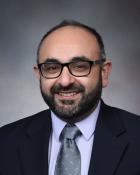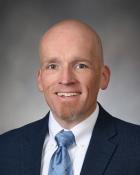Tetralogy of Fallot
Overview
Tetralogy of Fallot is a congenital heart defect that occurs when four specific heart defects are present at once. Together, these defects hamper blood flow through the heart and between the heart and the lungs. Typically diagnosed before or soon after birth and repaired with surgery during infancy, tetralogy of Fallot requires monitoring by a specially trained cardiologist throughout adulthood to watch for complications or indications that a second repair operation is necessary.
Types
Together, these four defects characterize tetralogy of Fallot:
- A ventricular septal defect, which is a hole in the wall that separates the heart’s two lower chambers (ventricles)
- Pulmonary stenosis, which is the narrowing of the pulmonary valve, the gateway that allows blood to flow from the right ventricle into the pulmonary artery and to the lungs, where it absorbs oxygen
- An overriding aorta, which is when the main artery that carries blood from the heart to the body is abnormally positioned so that blood that hasn’t yet picked up oxygen in the lungs flows to the body
- Right ventricular hypertrophy, which is when the right ventricle wall is abnormally thick and may hamper blood from passing through the pulmonary valve on the way to the lungs
Symptoms
Typically, tetralogy of Fallot doesn’t cause symptoms in adults who had the condition repaired in infancy or childhood, However, some people living with the condition may experience:
- Arrhythmia
- Blood flow problems in the heart
- Cyanosis (blue-tinged skin or nails)
- Heart valve leakage
- Tiring easily during exercise
Prevention
Tetralogy of Fallot is a condition that is present at birth and is not preventable.
Risk Factors
You are more likely to be born with tetralogy of Fallot if you also have Down syndrome or DiGeorge syndrome. You may also have a higher risk for tetralogy of Fallot if, during pregnancy, your mother:
- Did not eat healthily
- Had a viral infection, especially rubella
- Had diabetes and did not manage it properly
- Misused alcohol
- Was exposed to certain environmental hazards, such as air pollution
- Was older than age 40
Diagnosis
Tetralogy of Fallot is a pediatric condition that is almost always diagnosed during pregnancy or shortly after birth, and surgically repaired during infancy. If you’ve been diagnosed with this condition, you’ll need regular follow-up appointments throughout your life with a cardiologist experienced in adult congenital heart disease. The cardiologist will use a variety of technologies to monitor you for complications and to determine if additional procedures are needed to address problems related to the condition.
Treatment
It is rare for adults to undergo initial surgical repair of tetralogy of Fallot. If such is the case, one option is complete repair, which a surgeon can accomplish by patching a ventricular septal defect and treating the problems that impede blood from reaching the lungs. The procedure may include:
- Creating a new pathway for blood by placing a tube between the right ventricle and pulmonary artery
- Expanding the offshoot vessels that take blood from the pulmonary artery and into the lungs
- Removing muscle beneath the pulmonary valve
- Removing or repairing the pulmonary valve itself
If you had a complete repair operation as a child and developed problems related to surgical widening of the pulmonary valve, such as a leaky valve, you may need valve replacement surgery as an adult.
If a complete repair isn’t a short-term option for you, your cardiologist may recommend a procedure that will place a shunt between the pulmonary artery and the aorta or another artery that carries blood to the body. The procedure creates an alternate route for the blood to reach the lungs to absorb oxygen. If you underwent shunt placement as a child, a complete repair may be an option for you.
Follow-up Care
- If you undergo a complete repair, you may need to take medicine after the surgery to help your heart maintain a normal rhythm, and you may need to limit your physical activity. Be sure to follow your cardiologist’s recommendations.
- You may need to take antibiotics before dental procedures to prevent endocarditis, a bacterial infection that affects the inner lining of the heart.
- Most importantly, you’ll need to see your cardiologist regularly and keep him or her informed of any new symptoms. Your cardiologist will be on the lookout for problems common in people who’ve undergone tetralogy of Fallot repair, such as arrhythmia and decreased heart function.







